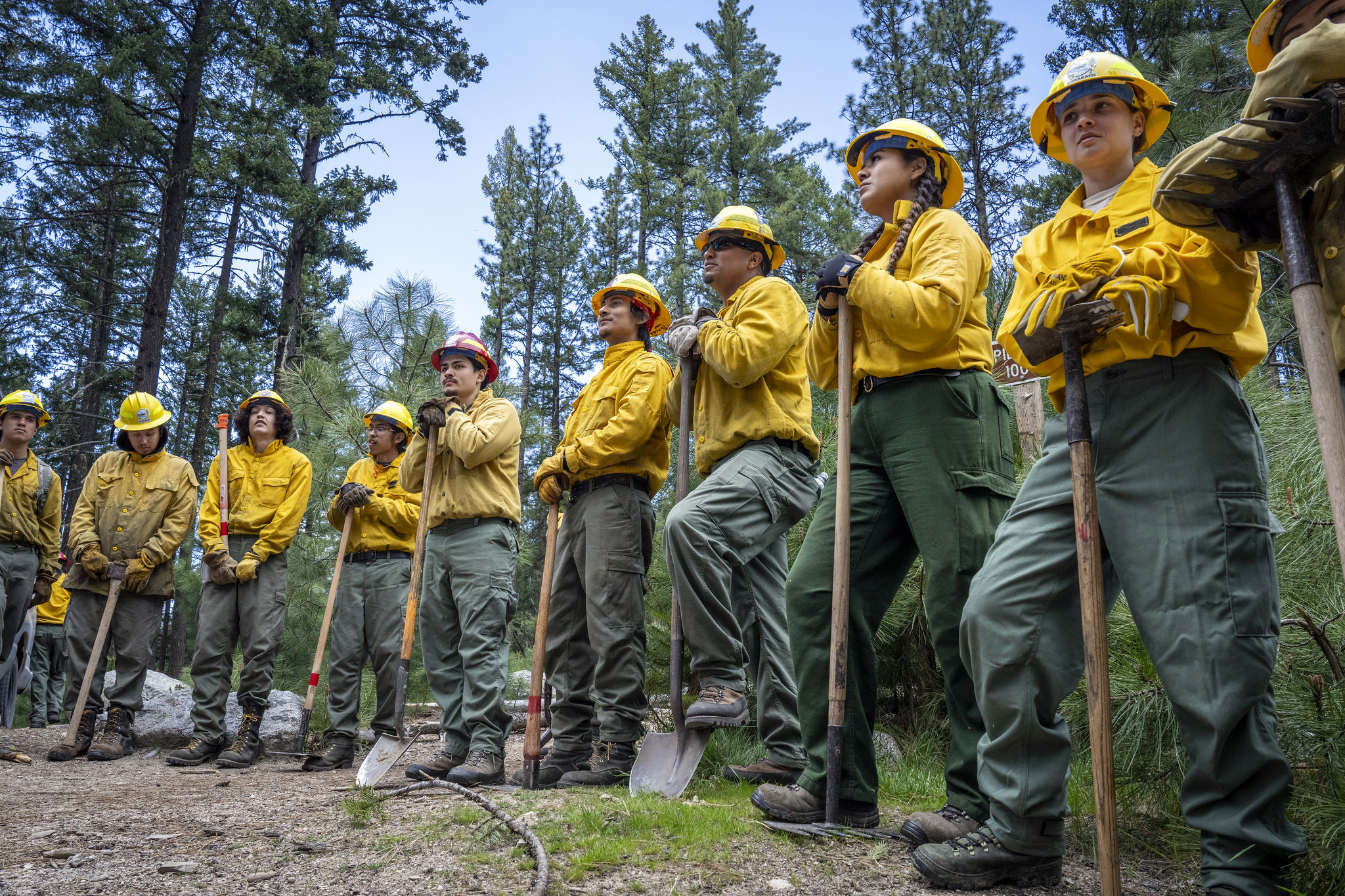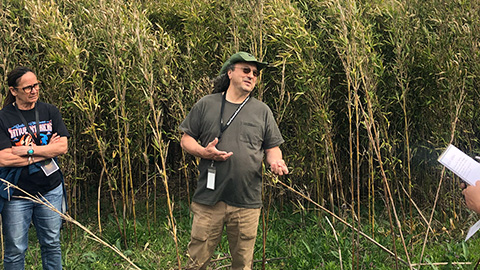The essence of the Southwest may be summarized in one word – Querencia. A sense of place where one feels safe, at home; where they can draw strength from communities tied to a landscape that provides resources for livelihoods and connections to the land that may not be understood well in other parts of the US.
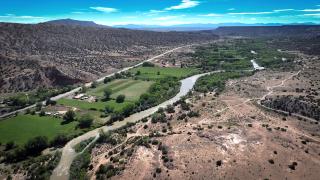
No characteristic rings truer for the communities and landscapes that comprise the Rio Chama Collaborative Forest Landscape Restoration Project (CFLRP), an ecosystem restoration project that spans 3.8 million acres of forested lands and multiple ownerships in Northern New Mexico and Southern Colorado. It’s here that Tribes, place-based collaboratives, private landowners, the USDA Forest Service, and other federal land managers convene to identify and act on opportunities to work together now and into the future.
Forest and watershed health are terms thrown around frequently, but here, functioning ecosystems are intricately tied to livelihoods for many.

“In the American West, public lands are a critical resource to communities of all types, but especially to rural communities,” said Dana Guinn, Southwest Partnership Manager at the Forest Stewards Guild and coordinator for 2-3-2 Partnership (2-3-2), the collaborative that works on the Rio Chama CFLRP.
“Ecosystem services and natural resources on public, private, and tribal lands are big drivers for rural economies and play an important role in community culture,” said Guinn. “As a result, the ways we get involved with and care for the land can make a big difference in our future.”
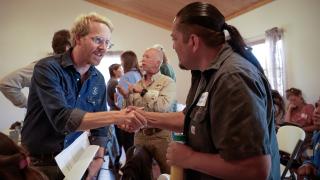
“Having a diversity of voices at the table and creating opportunities to understand many perspectives and needs helps us do right by the landscape and by our neighbors,” said Guinn.
Meeting at the ‘watering hole’
To reach those community voices the Forest Service works with the 2-3-2, a landscape-scale network that brings people together to plan, implement, and monitor forest and watershed work across the Colorado – New Mexico state line. Rio Chama CFLRP funds support regular partnership building, problem solving and collaboration within the 2-3-2 and the impact of these funds is multiplied by the many partners that join together as 2-3-2 members. 2-3-2 meetings function as a ‘watering hole’ where different players gather regularly to build relationships, talk through landscape management challenges and to work towards finding a common ground.
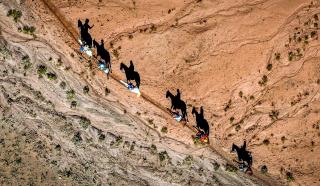
“The primary goal of our meetings is to get out on the landscape, take a look at things together, and learn from each other,” said Guinn. “It's also a forum where partners can access science and good landscape information then make informed decisions on their own and together.”
Building relationships sounds simple but is not always easy. Underlying complexities exist in the fabric of relationships between the community and the Forest Service due to nineteenth and twentieth century actions. More recent tensions, such as those resulting from the 2022 Hermits Peak/Calf Canyon Fire, an escaped prescribed burn just outside the Rio Chama CFLRP boundary that became New Mexico’s largest wildfire to date, also loom large in the partnership building space and cannot be ignored when learning to work together.
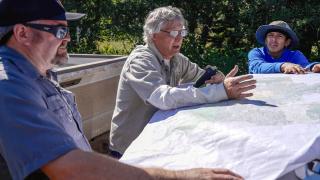
“The ecology, the economy, the monitoring, all of those things are important, but they're not going to fall into place unless people get to know one another and trust each other so we can work together,” said Guinn.
Luis Torres, a native New Mexican, champion for natural resource management, and participant in the 2-3-2 explains that “the lands that the Forest Service manages, they acquired from people who were here before the Forest Service came. There were people here, there were Native Americans and Hispanics. The U.S. government dispossessed those populations of this land”.
As Luis and many other residents recall, beginnings of Forest Service work in New Mexico are rooted in caretaking lands that belonged to others before the agency existed.
A commitment to collaborate is a forever commitment
Acknowledging these sentiments, the Forest Service in the region actively participates in the 2-3-2 and is digging in alongside partners to connect and rebuild trust with these communities. While collaboration cannot undo past injustices, it can help us know one another and the land, and provide a space for moving forward together.
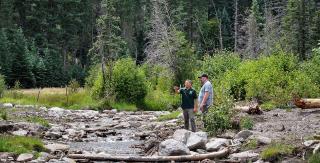
“The overall impetus for this project is really water conservation. In the dry desert southwest, water is life. It's critical that we work together across watersheds,” said Jermy Marshall, Rio Chama CFLRP Coordinator. “Watersheds much like fire, don't know boundaries. Our watersheds go through a mosaic of ecosystems across the landscape passing through various land ownerships. Water is what really ties us all together.”
Understanding this, the path forward is further commitment to the collaborative process by agency personnel, community leaders, partner organizations, and landscape residents.
Santa Clara Pueblo is a key 2-3-2 partner and Rio Chama CFLRP participant. Daniel Denipah, Santa Clara Pueblo Forestry Director, explains that important work that restores fire in fire-adapted landscapes is being done on Santa Clara and on ancestral lands managed by the Forest Service. Rio Chama CFLRP dollars and funds leveraged through the CFLRP help with these efforts.
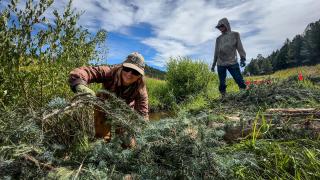
“The Pueblo is doing a lot of big thinning projects, and we had a lot of big, prescribed burns - over a thousand acres at a time,” said Denipah. “That’s what tied us [to] our collaborators, was making sure that we had our say and foot in the door when it came to the possibility of funding to come this way to provide Santa Clara that opportunity”.
Getting work done in the Rio Chama CFLRP boundary comes down to building relationships, no matter how challenging.
“The four forest supervisors on the Rio Grande, the San Juan, the Carson and the Santa Fe [National Forests] work together and help guide strategic decision making for the CFLRP,” said Guinn. “There’s a reciprocal kind of back and forth around what's important when and why. While the 2-3-2 convenes people, the line officers and Forest Service staff we work with are also really important connectors in their communities.”
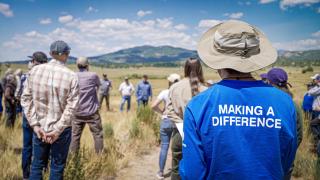
“By and large, the Forest Service is made up of people that care about the landscape and who connect with partners to apply funding to projects that matter,” said Guinn. “Working together with our communities, they're really walking that walk.”
Collaboration is not a one and done, it’s a commitment to reach across the fence, work together and move towards a common ground. Collaboration is a forever commitment.
Editor’s note: Congress created the Collaborative Forest Landscape Restoration Program in 2009 to support healthy forests, reduce the risk of catastrophic wildfire, and to support rural communities. The program provides ten years of funding for collaborative, science-based ecosystem restoration projects. As of FY2023, CFLRP has invested in collaborative approaches to restoration in 31 landscapes across the country. More than 650 local businesses, counties, tribal, state, and other federal agencies, utilities companies, NGOs, landowners, and community members have worked together to advance shared goals on the land and in communities.

